Explore Nyingchi - Tibet Travel, Asia
Nestled in the southeastern part of Tibet, Nyingchi offers a different side to the Tibetan experience. Often referred to as the “Switzerland of Tibet,” this picturesque region is blessed with lush greenery, winding rivers, snow-capped peaks, and some of the most breathtaking valleys in the Himalayas. With its rich cultural history, welcoming locals, and an abundance of natural beauty, Nyingchi has become a must-visit destination for nature lovers and cultural enthusiasts. Unlike Tibet’s higher-altitude regions, Nyingchi boasts a milder climate and lower elevation, making it a welcoming destination for travelers of all kinds.
Population: Approximately 240,000 in 2021.
Economy: Nyingchi’s economy is primarily driven by agriculture, tourism, and forestry. The region’s natural beauty and cultural heritage attract visitors, while agriculture supports local livelihoods.
Landmarks: Famous for the Basum Lake (or Basum Tso), Lulang Forest, and the Namcha Barwa Peak.
Tibet
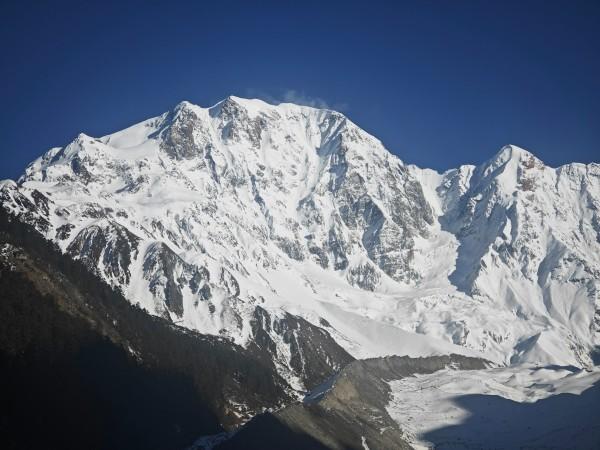
Overview of Nyingchi
History & Cultural Influence
Nyingchi is not just a visual paradise—it’s also steeped in history. Known for its deep roots in Tibetan Buddhism, Nyingchi holds spiritual significance in its monasteries and stupas. These sites often date back centuries, reflecting the long-standing cultural and spiritual practices of the Tibetan people. But beyond its religious landmarks, Nyingchi has a folk heritage that pulses through everyday life. Traditional Tibetan customs, such as seasonal celebrations, intricate handicrafts, and unique architectural styles, are woven into the region’s identity. Here, visitors can feel the influence of ancient Tibet alongside modern touches, creating a dynamic blend of past and present.
Interaction with the Locals
Nyingchi has a population of around 240,000 people, primarily made up of ethnic Tibetans. The locals are deeply connected to their traditions, with Tibetan Buddhism playing a central role in daily life. You'll also find minority groups such as the Lhoba and Monpa, each with their own distinct cultural practices. Nyingchi's citizens are known for their warmth and hospitality, often welcoming travelers with open arms and sharing their rich heritage through festivals, cuisine, and local customs. The slower pace of life and close-knit communities give Nyingchi a peaceful, inviting atmosphere.
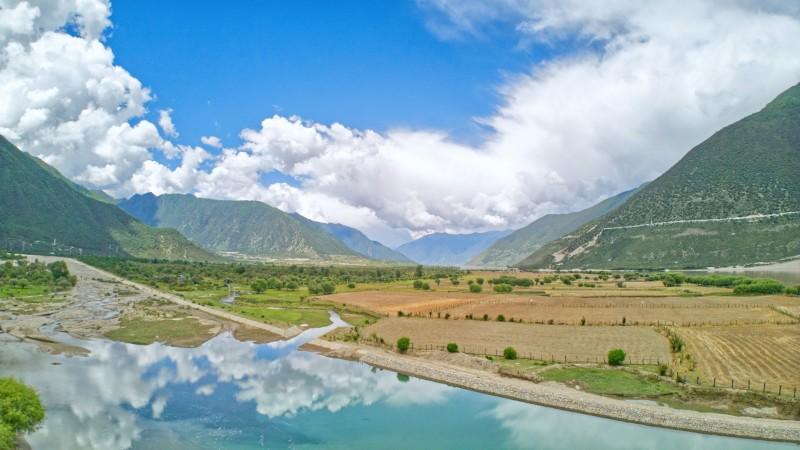
Nyingchi's natural beauty - © Chenxi Duan
Top Attractions in Nyingchi
Basum Lake (Basum Tso)
A serene alpine lake located 3,500 meters above sea level, Basum Lake is surrounded by dense pine forests, the lake’s crystal-clear waters reflect the towering Gongga Mountain and the surrounding snow-capped peaks, creating a picture-perfect setting. The lake is revered by Tibetans for its spiritual significance and is home to Tshozong Monastery, a small yet sacred Tibetan Buddhist temple on an island in the middle of the lake.
Lulang Forest
Known as the “Tibetan Switzerland” for its rolling meadows and dense pine forests, Lulang Forest is a haven for those seeking tranquility. The forest is located in the Lulang Valley, a scenic area that offers some of the best hiking and nature walks in Tibet. The lush greenery of the forest contrasts beautifully with the snow-dusted mountains in the background, making it a favorite spot for photographers. Lulang also has several Tibetan tea houses where travelers can stop and enjoy local refreshments like Yak Butter Tea.
Namcha Barwa Peak
Namcha Barwa is not just one of Tibet’s highest mountains but also one of the most mysterious. Often shrouded in mist, the peak is referred to as the “Heavenly Ridge,” and locals consider it a sacred mountain. The allure of Namcha Barwa comes from its largely untouched, remote location, making it one of the few unclimbed peaks in the world. Adventure travelers are drawn to the region to get a glimpse of this towering giant, particularly at sunrise and sunset when the mountain's snow-covered summit glows a brilliant gold.
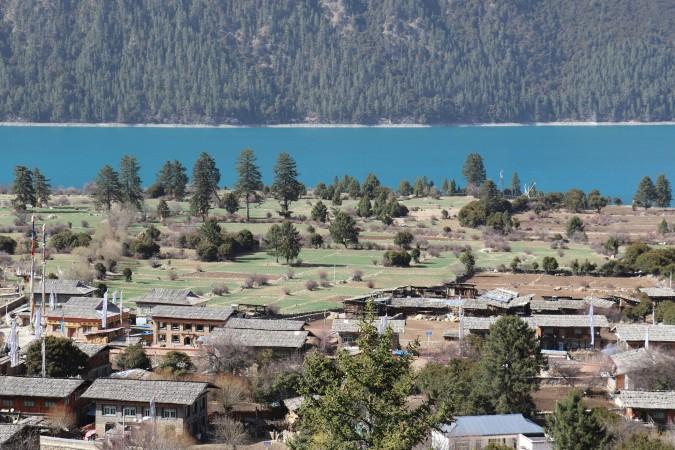
Basum Lake (Basum Tso) - © Texco Kwok
Must-Try Dishes in Nyingchi
Nyingchi’s cuisine reflects the rugged terrain and the agricultural traditions of the region, offering simple yet flavorful dishes. Each dish showcases the simple yet nutritious ingredients that the people of Nyingchi have relied on for generations, blending flavors that reflect both the land and the local way of life.
- Tsampa: A staple in Tibetan households, Tsampa is made from roasted barley flour and is often mixed with Yak Butter Tea or water. It’s a filling and nutritious dish that visitors will frequently encounter in local homes and monasteries.
- Yak Meat Stew: Nyingchi’s climate is ideal for raising yak, and yak meat is a key ingredient in many local dishes. Stewed with a variety of herbs and spices, this dish is rich and flavorful, often served with steamed buns or rice.
- Thenthuk: This Tibetan noodle soup is a perfect comfort food, especially on colder days. Made with hand-pulled noodles, meat (usually yak), and vegetables, it is both savory and satisfying.
- Momos: A must-try Tibetan delicacy, these dumplings are typically stuffed with meat, vegetables, or cheese. They’re steamed or fried and served with a spicy dipping sauce made from local chilies.
- Butter Tea (Po Cha): A traditional Tibetan beverage made from yak butter, salt, and black tea. It has a unique, savory flavor and is known for keeping locals warm and energized in high-altitude areas.
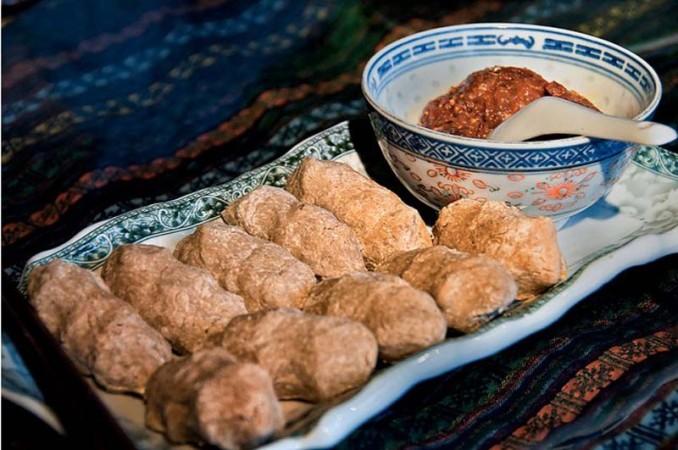
Tsampa - © Tibet Tourism
Festivals & Local Celebrations
Festivals in Nyingchi are vibrant cultural events that reflect the deep-rooted spiritual and social traditions of the Tibetan people. These festivals are not just celebrations but also opportunities for travelers to connect with Nyingchi’s rich cultural heritage and join in the joy and spirituality of the local people.
- Peach Blossom Festival: Held every March, the Peach Blossom Festival transforms Nyingchi into a pink wonderland as thousands of peach trees bloom. The festival celebrates the arrival of spring, and locals and visitors alike enjoy traditional Tibetan music, dance performances, and food stalls under the stunning backdrop of flowering trees and snow-capped mountains.
- Losar Holiday (Tibetan New Year): Losar, one of the most major ceremonies in Tibetan culture, is widely celebrated in Nyingchi. The festival includes family gatherings, religious ceremonies, and public dances. Visitors can witness the traditional rituals performed at monasteries and partake in the festive atmosphere with local communities.
- Saga Dawa Festival: Celebrating the birth, enlightenment, and death of Buddha, the Saga Dawa Festival is a deeply spiritual event. Locals perform sacred rituals, circumambulate monasteries, and make offerings to monks. Visitors will find the devotion and spirituality of this festival both moving and inspiring.
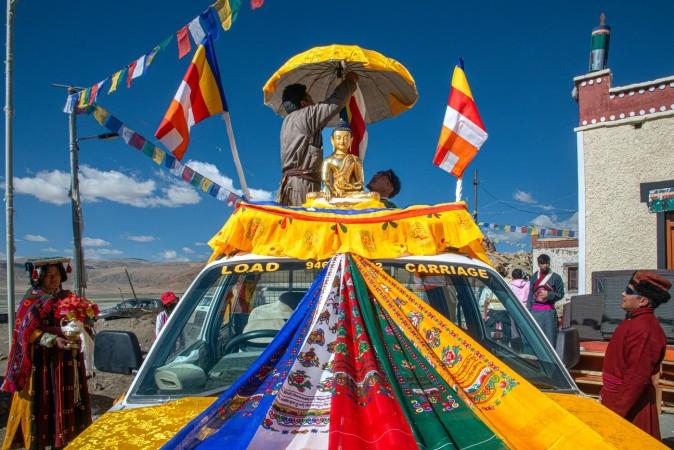
Saga Dawa Festival - © People's Archive of Rural India
What to Do in Nyingchi
- Trekking & Hiking in Nyingchi: With its lower altitude and stunning scenery, Nyingchi is perfect for trekking and hiking enthusiasts. Popular trails lead through Lulang Forest and the Yarlung Tsangpo Grand Canyon, offering breathtaking views of mountains, rivers, and valleys. Along the way, hikers can visit small Tibetan villages and monasteries.
- Rafting in Yarlung Tsangpo River: For those seeking adventure, rafting down the Yarlung Tsangpo River provides an adrenaline-pumping experience. The river’s powerful rapids and scenic surroundings make it one of the most thrilling rafting spots in the world.
- Wildlife Watching: Nyingchi’s diverse ecosystems are home to a variety of rare species, including the snow leopard, Tibetan antelope, and golden monkeys. Nature reserves like Sejila Mountain offer guided wildlife tours where visitors can spot these elusive animals in their natural habitat.
- Monastery Visits: Explore Nyingchi’s spiritual side by visiting ancient Tibetan monasteries like Lamaling Monastery. These sacred spaces provide insight into Tibetan Buddhism and offer a peaceful environment for meditation and reflection.
Shopping in Nyingchi
- Tibetan Handicraft Stores: These crafts frequently feature spiritual symbolism and are crafted using ancient techniques passed down through generations.These crafts frequently feature spiritual symbolism and are crafted using ancient techniques passed down through generations.
- Tibetan Herbal Medicines: Nyingchi is famous for its use of natural herbal remedies, which have been a part of Tibetan medicine for centuries. Visitors can purchase locally sourced herbal teas, essential oils, and medicinal plants known for their healing properties.
- Peach Product Stores: Nyingchi’s famous peach orchards not only offer beautiful scenery but also produce delicious peach wine, jams, and dried peaches, which make for a tasty souvenir from the region.
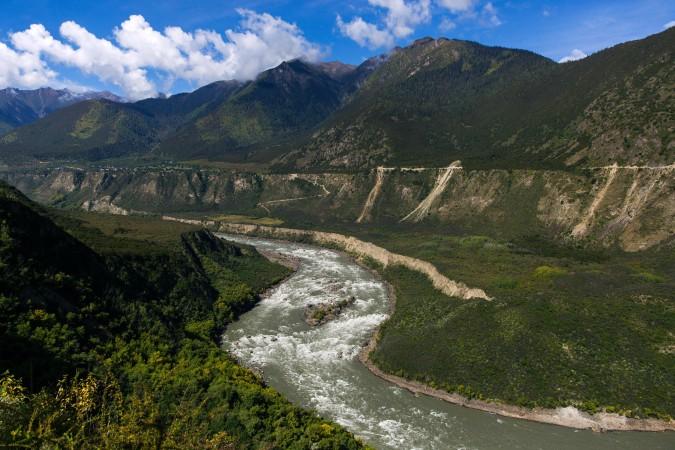
Yarlung Tsangpo River - © Kyluc.vn
Weather in Nyingchi: Best Time to Visit
Spring in Nyingchi
- Weather: Temperatures range from 8°C to 16°C (46°F to 61°F). Spring in Nyingchi is famous for its Peach Blossom Festival, which paints the region in shades of pink and attracts photographers and nature lovers from around the world.
- Tourism Trend: This is one of the peak tourist seasons, with the blooming peach blossoms drawing both domestic and international travelers. The warm weather and breathtaking scenery make it ideal for outdoor activities such as hiking and photography. Expect crowds, especially during the festival.
Summer in Nyingchi
- Weather: This is the wettest and warm season, with temperatures ranging from 10°C to 20°C (50°F to 68°F) but the rainfall nourishes Nyingchi’s lush greenery, creating vibrant landscapes.
- Tourism Trend: Summer is popular among adventure enthusiasts seeking to trek the Yarlung Tsangpo Grand Canyon or go rafting on its rivers. Families and younger travelers visit due to school holidays, although the region is less crowded compared to spring.
Autumn in Nyingchi
- Weather: Cool and pleasant, with temperatures ranging from 5°C to 15°C (41°F to 59°F). The fall foliage adds stunning golden tones to the region’s natural scenery.
- Tourism Trend: Autumn sees a moderate influx of tourists, particularly those interested in nature, photography, and trekking. The cooler weather and beautiful colors attract visitors, although it’s slightly less busy than spring. The season is popular for cultural trips and those looking for scenic drives through Lulang Forest.
Winter in Nyingchi
- Weather: Cold with temperatures between -5°C and 10°C (23°F to 50°F). Snowfall covers the mountains, creating a serene and peaceful atmosphere.
- Tourism Trend: Winter is the low season for tourism, but it’s ideal for travelers seeking solitude and the raw beauty of snow-covered landscapes. It's also an excellent time to attend local winter festivities and immerse yourself in Tibetan culture without the masses. This season appeals to spiritual travelers and those who prefer a quieter, more introspective journey.
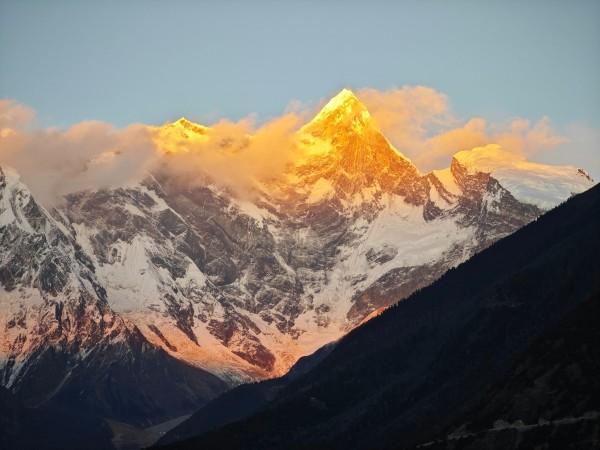
Witness the beauty of Nyingchi's nature - © Wanghao SANG
Essential Travel Information
Getting Around Nyingchi
- By Road: For those who enjoy scenic road trips, Nyingchi is accessible by road from Lhasa via the G318 National Highway, offering breathtaking views of valleys, rivers, and mountains.
- By Public Bus: Public buses run between major towns in the Nyingchi region. They are an affordable option for getting around, although schedules can be irregular.
- Taxis & Private Cars: Taxis are available in Bayi Town, but for more remote attractions, hiring a private car or joining a tour group is recommended. Private cars offer flexibility for visiting places like Basum Lake or Yarlung Tsangpo Canyon.
- Biking & Walking: For short distances, biking and walking are great ways to explore the scenic landscapes and villages around Bayi Town.
ATM & Banking Services
ATM and banking services in Nyingchi are primarily concentrated in the main town of Bayi, where visitors can find machines that accept international cards for cash withdrawals. However, it's important to note that outside of the town, such services become sparse, and cash is often preferred in more remote areas. Travelers are advised to carry enough local currency, especially when exploring rural regions and smaller attractions.
Where to Stay in Nyingchi
- Luxury Hotels: For those seeking comfort and relaxation, Nyingchi has several upscale hotels offering modern amenities, beautiful views, and high-end services. These hotels provide a relaxing retreat after a day of exploration, with well-appointed rooms and high-end services.
- Mid-Range Hotels: Visitors looking for affordable yet comfortable options can choose from a variety of mid-range hotels, particularly in the central area of Bayi Town. These hotels offer essential amenities and cater to both domestic and international tourists, making them a popular choice for travelers on a moderate budget.
- Tibetan Guesthouses: For a more authentic experience, traditional Tibetan guesthouses in the surrounding villages offer a chance to immerse yourself in local culture. These guesthouses provide simple but cozy accommodations and often include opportunities to interact with local families, giving visitors a deeper understanding of Tibetan life.
- Camping Lodges: Adventure seekers can opt for camping in Nyingchi’s scenic spots, such as the lush forests or near tranquil lakes. Designated camping areas are available, but travelers should ensure they are well-prepared with the necessary equipment and permits for a safe and enjoyable outdoor experience.
Articles for you

Explore Yala National Park - Sri Lanka Travel, Asia
Tucked away in Sri Lanka’s southeastern corner, Yala National Park is where wild nature meets deep tradition. Known worldwide for its leopard population, the park is also home to elephants, sloth bears, crocodiles, and hundreds of bird species. Beyond wildlife, Yala opens doors to a cultural landscape dotted with ancient temples, Buddhist ruins, and coastal villages. For travelers seeking more than just a safari, Yala offers a chance to explore eco-tourism, local communities, and sacred heritage sites.
Population: The Yala National Park area doesn’t have a human population.
Economy: The economy around Yala National Park thrives on a blend of eco-tourism, agriculture, and local services. Safari tours, eco-lodges, and cultural experiences drive steady income for nearby towns like Tissamaharama and Kataragama, supporting thousands of families.
Landmarks: Famous for Block I of Yala and wildlife encounters, including elephants, sloth bears, crocodiles, and exotic bird species.

Explore Galle - Sri Lanka Travel, Asia
Nestled on Sri Lanka’s southern coastline, Galle is a vibrant city where history meets the sea. Its cobbled streets, colonial architecture, and serene beaches make it a must-visit destination for travelers seeking a blend of culture, adventure, and relaxation. A UNESCO World Heritage site, Galle captivates visitors with its Dutch Fort, bustling markets, and friendly locals. Whether you’re exploring the ramparts at sunset or savoring fresh seafood by the shore, Galle promises an unforgettable journey into Sri Lanka’s heritage.
Population: Approximately 113,000 in 2023.
Economy: Galle’s economy thrives on tourism, trade, and fisheries. The city’s historic fort, colonial architecture, and coastal charm draw thousands of international visitors each year, making tourism its main economic driver. Fishing remains vital for local livelihoods, supplying fresh seafood across the region.
Landmarks: Famous for the Galle Fort, Dutch Reformed Church & Maritime Museum, and Unawatuna Beach.

Explore Bentota - Sri Lanka Travel, Asia
Nestled along Sri Lanka’s southwestern coast, Bentota is a tropical paradise that blends golden beaches, vibrant culture, and thrilling adventures. Famous for its calm waters, luxury resorts, and scenic river estuary, Bentota has become a top destination for travelers seeking both relaxation and authentic experiences. From serene beach walks at sunrise to adrenaline-pumping water sports, this coastal town offers a perfect balance of leisure and exploration. With its proximity to Colombo and Galle, Bentota is easy to reach, making it an ideal stop for both short escapes and extended holidays.
Population: Approximately 37,000 in 2023.
Economy: Bentota’s economy thrives mainly on tourism, which drives local businesses such as hotels, restaurants, and wellness retreats. The town also benefits from fishing, coconut cultivation, and handicrafts like wood carving and batik textiles. Many residents rely on the growing demand for water sports and Ayurvedic treatments, making tourism the backbone of both income and employment in the area.
Landmarks: Famous for Bentota Beach, Bentota River Safari, and Kande Vihara Temple.

Explore Mirissa - Sri Lanka Travel, Asia
Mirissa is a charming coastal town on Sri Lanka’s southern shoreline. Known for its golden beaches, turquoise waters, and vibrant marine life, it has become a must-visit stop for travelers exploring the island. Many come for whale watching, surfing, and sunset views at Coconut Tree Hill, but Mirissa offers much more than postcard beauty. The fishing boats you see anchored by the bay carry generations of stories. Local traditions, delicious cuisine, and a laid-back rhythm of life shape every visitor’s experience.
Population: Approximately 4,700 in 2023.
Economy: Mirissa’s economy is largely shaped by its coastal location. Fishing has long been the backbone of local livelihoods, with generations relying on the Indian Ocean for income. In recent decades, tourism has become the main driver of growth, thanks to whale watching, surfing, and beachside hospitality.
Landmarks: Famous for Mirissa Beach, Coconut Tree Hill, and Parrot Rock Bridge.

Explore Nuwara Eliya - Sri Lanka Travel, Asia
Tucked away in the Central Highlands of Sri Lanka, Nuwara Eliya is often called “Little England”. With its rolling tea plantations, cool misty mornings, and colonial charm, this mountain town feels like a step into another world. Travelers come here to breathe fresh air, walk through flower gardens, sip the finest Ceylon Tea, and enjoy a pace of life far from the island’s busy cities. Whether you’re drawn by scenic landscapes, heritage architecture, or the warmth of its people, Nuwara Eliya is a destination that blends nature, culture, and history in perfect harmony.
Population: Approximately 781,000 in 2023.
Economy: Nuwara Eliya’s economy thrives mainly on tea production, as it sits in the heart of Sri Lanka’s central highlands, famous worldwide for Ceylon Tea. The city also benefits from a growing tourism industry, attracting visitors with its colonial charm, cool climate, and scenic landscapes.
Landmarks: Famous for Gregory Lake, Hakgala Botanical Garden, and Victoria Park.

Explore Sukau - Malaysia Travel, Asia
Nestled on the banks of the Kinabatangan River in Sabah, Malaysian Borneo, Sukau is a destination where wildlife, culture, and conservation come together. Known as one of Asia’s top spots for river safaris and eco-tourism, this quiet village offers a front-row seat to encounters with Bornean orangutans, pygmy elephants, proboscis monkeys, and exotic birdlife.
Population: Approximately 1,400 in 2019.
Economy: Sukau’s economy is shaped by its riverine location and natural resources. Traditionally, the Orang Sungai community relied on fishing, small-scale farming, and forest gathering for their livelihood. Today, the village has shifted toward eco-tourism, with river cruises, jungle trekking, and homestays providing income.
Landmarks: Famous for the Kinabatangan River cruises, Gomantong Caves, and Ox-bow lakes and wetlands.
